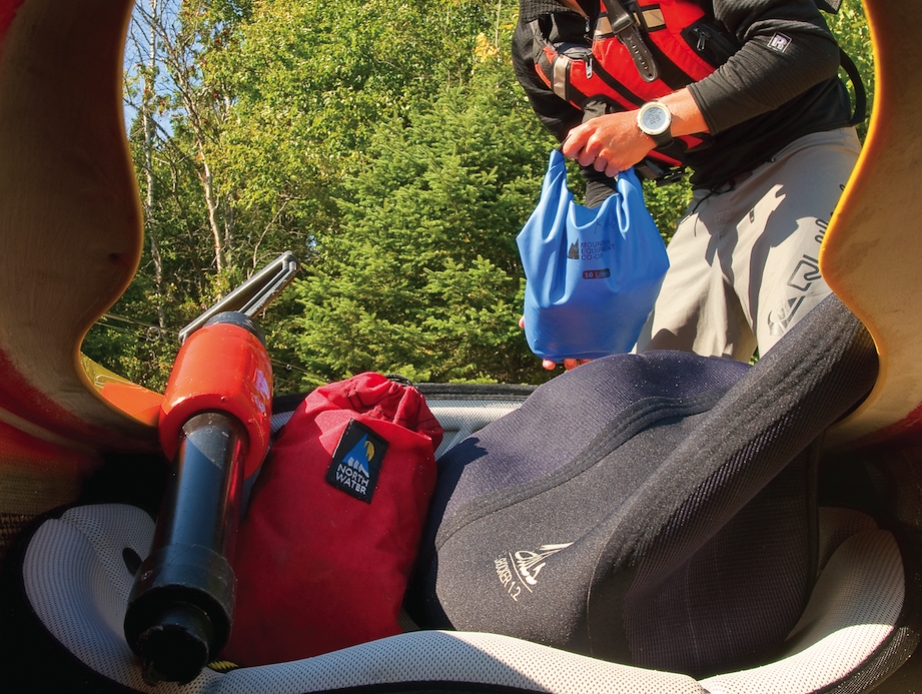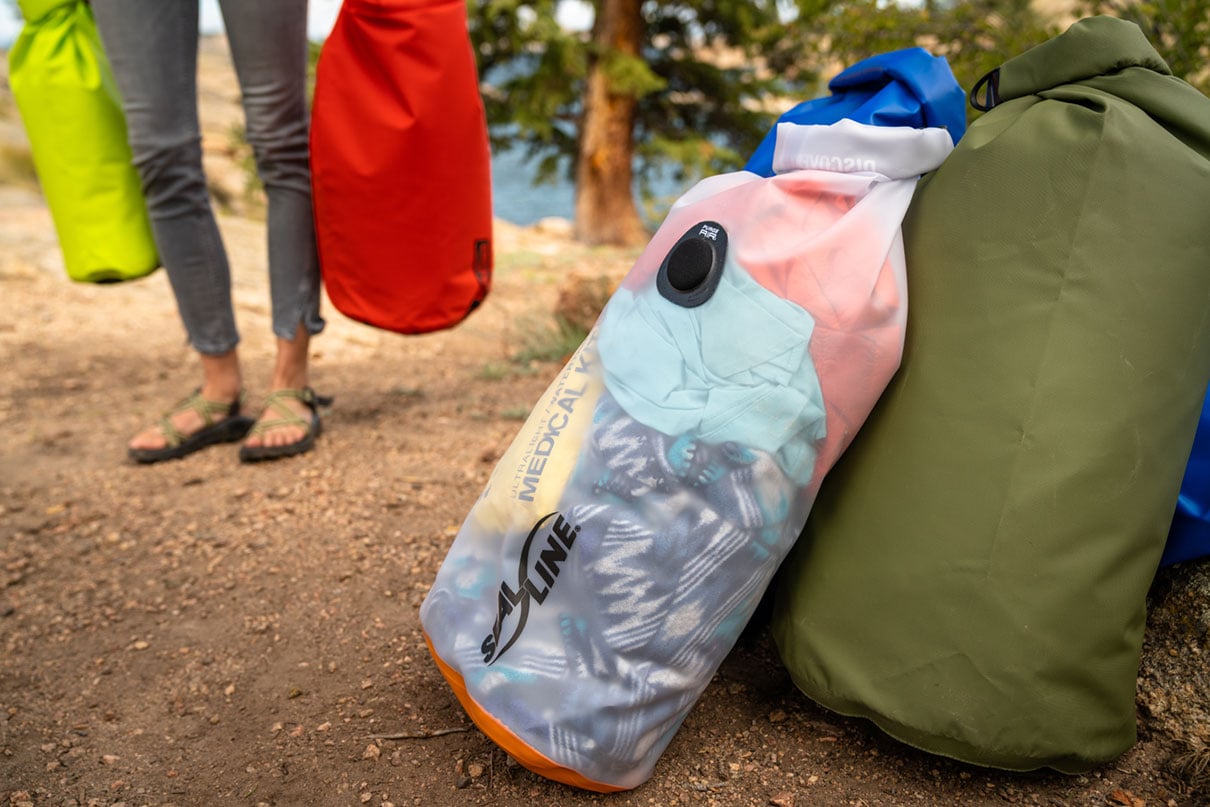If you are unable to self-rescue while sea kayaking, then bringing a boat-full of luxury items to have a comfortable trip will be in vain. You do not need to be a professional to know what to bring and how to pack it but learning from those who are sea kayaking professionals can be easier than trial and error. Sea kayak guides develop their own packing and safety systems; they all know that a few standard items packed on the body or in the cockpit will help quickly mediate many escalating situations. No matter your style or micro systems, packing like a guide is simple: Keep the items most necessary to survival at closest proximity.
Kayak essentials: Sea kayaking ditch bag
First, on the body you’ll want a sounding device, visual alert and a fire starting kit. Clip your VHF radio to your PFD and know how to use it. Remember that throughout Canada and the United States channel 16 is used to make calls. Always keep track of where you are and be ready to share this information. If help is in the area, flares may be your best chance at being seen. Keep them dry. At the very least, equip your PFD with a loud whistle. Be sure you can access it and blow it comfortably from where it’s tied.
Assuming you self-rescue, get an assist or swim to shore, you may need heat from a fire to stave off hypothermia. Three crucial and easily packed items will make it happen: ignition, tinder and a knife.

Don’t trust waterproofing to a tiny dry bag alone. Double up with a new plastic inner bag with ends twisted shut as a security measure. Stash two lighters and waterproof them separately. If you choose matches, don’t count on strike-anywhere ones; include the strike pad in your kit. For tinder, I like cottonballs coated in petroleum jelly. Stuff these in a waterproof tube or pill container.
I use a straight-blade knife with sheath that attaches right onto my PFD. A solid non- collapsible knife with a beefy handle makes the creation of rooster tails and splitting cedar most efficient. Keeping these three safety items together, dry and on your person will make starting a fire as easy as possible under potentially ugly conditions, especially in ubiquitously wet coastal weather.
Most guides pack a few items that can fit into a small dry bag in the cockpit between their legs or preferably clipped in behind the seat so it doesn’t disappear if they bail. The contents seem simple, but prove repeatedly useful.
I bury spare warm base layers at the bottom of this dry bag and hope I don’t see them again until I get home. Put a wool or fleece toque in there, because if any part of you is cold, putting on a warm hat helps. Dry gloves or hand warmers can make the difference between having the dexterity to build a fire or not. You’ll be grumpy paddling a rainy coast without a proper rain hat—if you have the good fortune to begin your trip in the sun don’t forget to stuff a rain hat in your dry bag.
The last item on my list offers the comfort and emotional support that helps me function better on trip and can aid in stabilizing a cold or injured person. Before breaking camp in the morning I boil extra water to make tea or quick soup in a thermos; a good one will actually keep liquids piping hot until evening.
You can spend a lifetime modifying these personal kits; most guides do. Some develop and check menu-card packing lists before each trip. A best-case scenario is that none of this stuff is even necessary except maybe the warm thermos treat when you land at the end of the day.
April Link spent 100 days in Canadian outdoor leadership training (Colt) in Strathcona Park to become a Sea Kayak Guide and Canoe instructor on the coast of British Columbia.
This article originally appeared in Adventure Kayak, Fall 2010.
Feature photo: Kamil Balous



